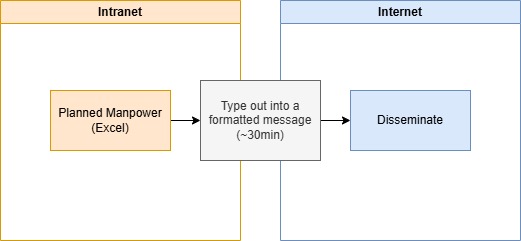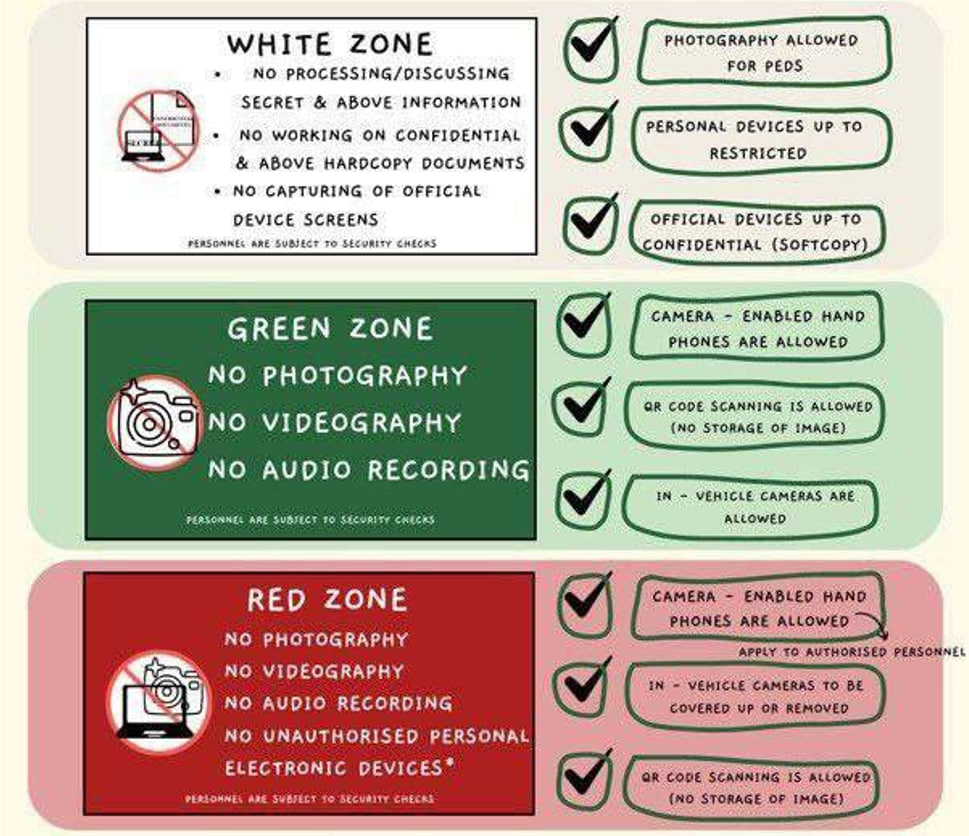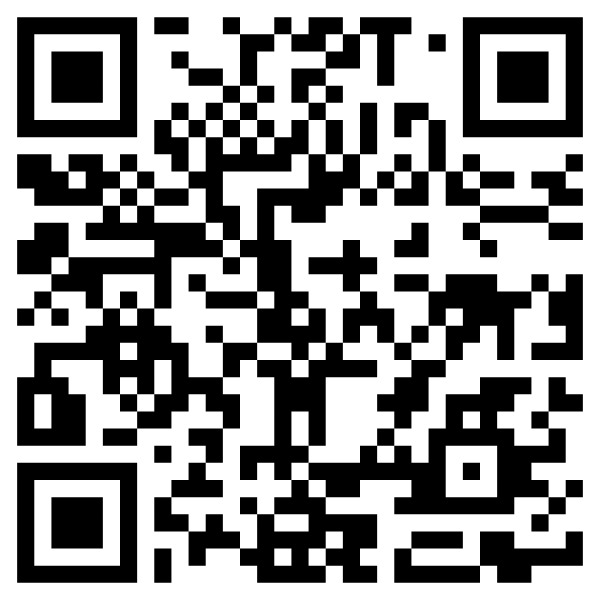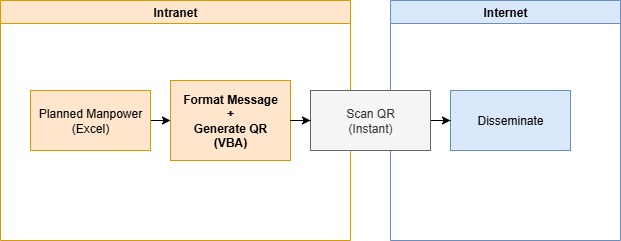Intranet manpower dissemination enhancement
During my second reservist cycle (a 3-week stint), I implemented an enhancement to the existing manpower workflow, resulting in an annual savings of 180 man-hours for a senior Engineer.
Background
In this Organization, Engineers often receive their in-time to assigned locations only shortly in advance.

Figure 1: Traditional Workflow
Manpower allocation is handled by a senior Engineer, who has access to the planned activities in advance.
The challenge? The schedule exists only on the intranet, but it needs to be shared over the internet via messaging platforms.
Currently, the planner has to manually type out the information daily (for up to 60 people) and send it to other Engineers—an inefficient process that:
- Is prone to typos and human error.
- Consumes around 30 minutes every day.
Solution
Identifying the problem
Manually entering daily manpower data takes around 30 minutes and is repetitive. To improve efficiency, we need a solution that can:
- Parse the Excel file into the required message structure.
- Seamlessly disseminate the formatted message.

Figure 2: MSD compliance
The solution also has to be MSD-compliant, to ensure we're abiding by the restrictions.
Introducing the QR Code
QR codes, short for Quick Response codes, are everywhere—from your Paylah QR to event tickets. At first glance, they might just seem like a jumble of black and white squares, but they’re actually a powerful way to store information digitally.

Figure 3: Example QR Code
The most common use case for QR codes is opening a webpage instantly, but they are not limited to just web links. They can also encode text, which can be easily read and processed by any modern smartphone.
This technology is what I leveraged to enhance the manpower planner’s workflow.
Limitations
The intranet has several constraints:
- No internet access.
- No software installations allowed, except for those natively included.
- Computers must be operated within premises, which has zone restrictions as illustrated in Figure 2.
These constraints mean that message formatting and QR code generation must work within the limitations outlined above.
Implementation
Project Nayuki, an open source (under MIT License) QR Code generator, has a VBA port which allows for offline QR code generation entirely using VBA.
Since Excel supports macros (VBA), we can:
- Parse the Excel file using VBA (custom-written) into the required message structure.
- Generate QR code based on the parsed data.
- Have the Engineer to scan the generated QR code, allowing a one-click copy for efficient manpower dissemination.
Enhanced Workflow

Figure 4: Enhanced Workflow
The implementation took roughly 4 days and has been in effect since 26th August 2025.
Conclusion
Working around the limitations and delivering an effective solution during reservist has been very rewarding. I hope to continue making a meaningful impact in the remaining reservist cycles to come!
